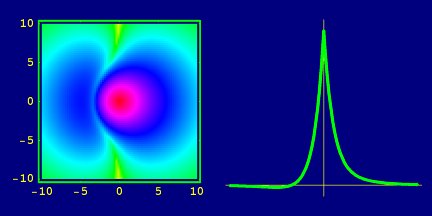Welcome
Research
dipole forces
stim. scattering
coherent control
Literature
People
Join us!
Contacts
Teaching
Useful links
PHYS 3003 Light and Matter
|
IntroductionThe aim of this course is to provide an introduction to modern optical physics and to arm students with a basic knowledge of light-matter interactions, electro-optics and nonlinear optics. This will give them a fundamental base for understanding the techniques and technologies of photonics and experimental quantum optics, as well as drawing together and developing many more basic and beautiful aspects of physics. Learning OutcomesAfter studying this course students should have a basic knowledge and understanding of:
Syllabus
Teaching and Learning MethodsThe method of teaching is mainly by 30 lectures. Several problem sheets are handed which student do in their own time and some of them will be solved by the lecturer in the class. Non-contact HoursSix hours per week of independent study is expected of students. Assessment MethodsAssessment is by written examination at the end of the course. The paper will have a compulsory section A with between 5 and 10 short questions covering the whole units and a section B where answers to 2 questions out of 4 will be required. Recommended Books and Course Materials
|
|||||||||||||||||||||||||||||||||||||

Lecture notes:
introduction
Chapter 1
Chapter 2
Chapter 3
Chapter 4
Chapter 5
Chapter 6
Chapter 7
Chapter 8
Lecture slides:
Chapter 2
Chapter 3
Chapter 4
Chapter 5
Chapter 6
Chapter 7
Chapter 8
Qu Computing
Guest lecture
Problem sheets:
Examinations:
Jan 2004 / solns
report
Jan 2005 / solns
report
Jan 2006 / solns
report
Jan 2007 / solns
report
Links:
BBC: In Our Time
Feynman in NZ
Polarization.com
Reciprocity
Laser cooling
Quant computing
Deutsch paper
Peatross & Ware
School of Physics and Astronomy, University of Southampton
Highfield, Southampton, SO17 1BJ, United Kingdom
Tel: +44 (0)23 8059 2093, Fax: +44 (0)23 8059 3910
